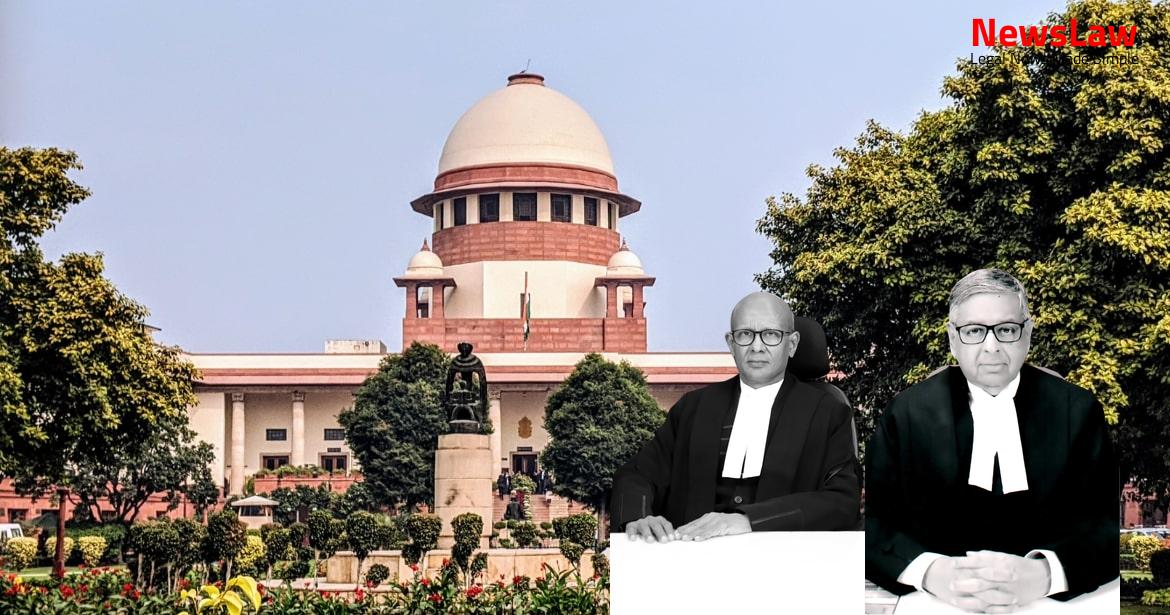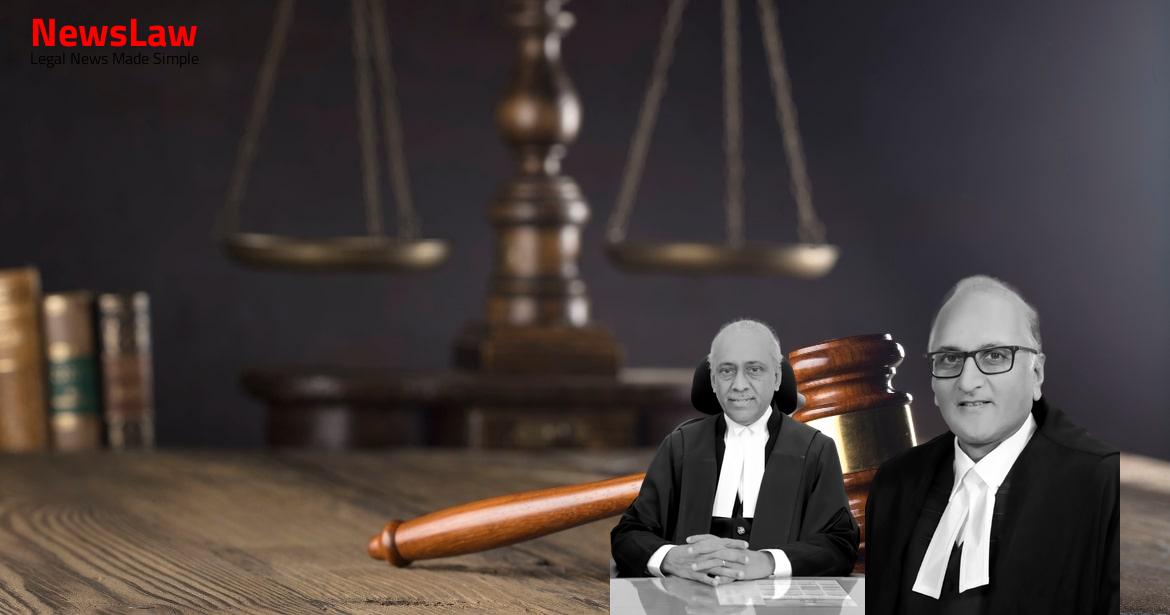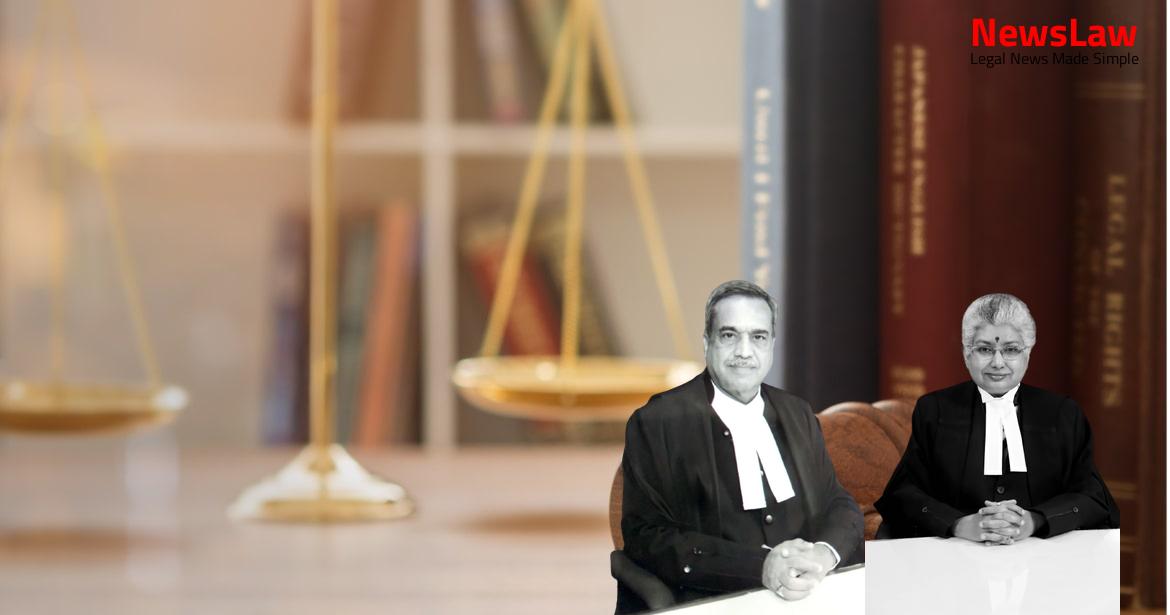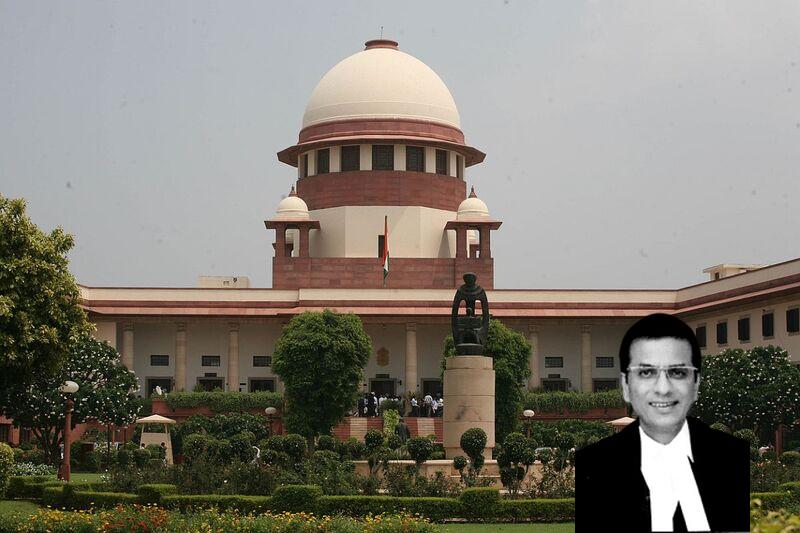Delve into the detailed legal analysis conducted by the Supreme Court regarding curative jurisdiction in a recent case. The Court’s examination of the regulatory framework and the parameters of curative petitions sheds light on the complexities of legal disputes and the application of judicial review. Stay tuned to unravel the nuances of the Court’s approach in addressing the intricacies of the law.
Facts
- The Registrar refused to receive the curative petitions of the appellants citing non-compliance with Rule 2(1), Order XLVIII, S.C.R., 2013.
- The appellants’ petitions were declined for registration under Order XV Rule 5 of Supreme Court Rules, 2013.
- The dispute arose from a suit under ‘The Interest on Delayed Payments to Small Scale and Ancillary Industrial Undertakings Act, 1993’.
- The review petition related to the same matter was dismissed after an open court hearing on 18.12.2019.
- These appeals have been filed under Rule 5 of Order XV of the Supreme Court Rules, 2013.
- The Registrar’s order declining registration of the curative petitions was common to multiple similar petitions based on similar factual and legal grounds.
- The appellant’s case reached the Court and a judgment was delivered on 23.01.2019.
- A three-Judge Bench held that the material date for instituting the suit for interest depended on the delivery date by the supplier – whether it was after the statute’s operation.
- An appeal against the High Court judgment was dismissed by a three-Judge Bench on 23.01.2019.
- The Court was not satisfied that the goods were supplied after the statute’s operational date for claiming interest on delayed payment.
- The appellant’s suit was decreed by the Trial Court but dismissed by the High Court mainly due to maintainability issues.
- The High Court ruled that the 1993 Act suit would not apply to transactions before 23.09.1992, the Act’s operational date.
- A Full Bench of the Gauhati High Court stated that the right to claim interest under the statute did not extend to contracts before 23.09.1992.
Also Read: Contractual Interpretation in Real Estate Dispute
Issue
- Can the right to sue for interest under the Act relate back to delayed payments made under agreements entered into before the date of promulgation of the ordinance?
Also Read: Non-compliance with requirements of Section 81(3) of the Representation of the People Act, 1951
Arguments
- Mr. Anand Sanjay M. Nuli appeared for the appellants and presented main submissions.
- Mr. Vijay Hansaria, representing the respondent, highlighted Order XLVIII of the 2013 Rules, stating that the review petition was dismissed in open Court after oral submissions.
- Mr. Ramachandran, the Amicus Curiae, argued that the mere mention of the review petition being dismissed by circulation should not solely determine the maintainability of a curative petition.
- Mr. Hansaria contended that the judgment in the case of Rupa Ashok Hurra (supra) needs reconsideration and cited Order LV Rule 2 of the 2013 Rules to support the argument for excusal from compliance with the rules.
- Mr. Ramachandran referred to an order dated 08.02.2016 in the case of Rama Rao Poal -vs- Samaj Parivartana Samudaya, where a Coordinate Bench directed that the maintainability question should be decided by the concerned Bench, highlighting the issues related to the curative petition being maintainable against a review petition heard in open Court and the compliance with the pre-conditions set in the Rupa Ashok Hurra case.
- The respondent argued that the curative petition does not challenge the impugned order on grounds of violation of principles of natural justice or on the merits of the case.
- They also contended that the petition does not point out any new material or ground which was not argued before or taken into consideration by the court in the earlier proceedings.
- The respondent emphasized that the curative petition cannot be used as a tool to re-argue the same issues that were already decided by the court in the main petition and the review petition.
- It was reiterated that the curative petition is only meant to prevent gross miscarriage of justice or abuse of the process of the court.
- The respondent reasoned that the grounds raised in the curative petition were nothing but an attempt to re-examine the same contentions that were already dealt with by the court, and therefore, the petition should not be entertained.
Also Read: Setting Minimum Qualifying Marks for Viva Voce: A Question of Legality
Analysis
- Curative jurisdiction of the Court is derived from Articles 129 and 142 of the Constitution of India.
- The Registrar cannot decline the registration of a curative petition but must circulate it for further consideration.
- The provisions in the Supreme Court Rules 2013 guide the filing and processing of curative petitions.
- A curative petition must be filed within a reasonable time from the date of the judgment or order passed in the review petition.
- The composition of the Bench to consider a curative petition is specified in the case of ‘Rupa Ashok Hurra’.
- The Court needs to examine if there are violations of principles of natural justice or bias when considering a curative petition.
- The Court has the discretion to decide on the course of action for curative petitions, such as oral arguments or dismissal by circulation.
- Registry’s role is to process curative petitions in accordance with the Rules and instructions from the Judge in chambers.
- Curative Petitions are governed by the Judgment of the Court dated April 10, 2002, in the case of Rupa Ashok Hurrah v. Ashok Hurrah and Ors.
- In cases involving death sentence, a limited oral hearing must be given to the convict at the stage of the review petition, as per the judgment in Mohd. Arif -vs- Registrar, Supreme Court of India.
- A Curative Petition must include a statement that the review petition was dismissed by circulation, as per the Rupa Ashok Hurra case.
- The Constitution Bench reaffirmed limitations on the scope of curative petitions, following the Union Carbide case.
- The Court emphasized that the inherent power to reconsider orders should not be used routinely and must be exercised with caution.
- Curative petition must be the first in the impugned matter to be accompanied by a certificate of the Advocate on Record.
- Requirements for a Curative Petition must be certified by a Senior Advocate.
- Supreme Court has the power to review any judgment or order pronounced by it.
- Rules of Court, including practice and procedure, can be regulated by the Supreme Court with the President’s approval.
- Rules may include matters such as persons practicing before the Court, procedures for appeals, enforcement of rights, review procedures, costs, bail, stay of proceedings, and more.
- Minimum number of Judges required for certain cases involving substantial questions of law is five.
- Judgments and opinions of the Supreme Court must be delivered in open Court and require majority concurrence.
- The judgment in the case of P.N. Eswara Iyer and Others -vs- Registrar, Supreme Court of India (1980) 4 SCC 680 was cited by the petitioner.
- The judgment distinguishes between an original hearing and a review at a later stage.
- It was held that the parameters for these two proceedings are different.
- The judgment was related to an amendment in the Supreme Court Rules, 1966 regarding oral hearings of review petitions.
- However, this judgment does not assist the respondent as it was delivered in a different context under different rules.
- The Court decided not to remand the matter to the Registrar due to the substantial time that has lapsed since the curative petitions were filed in 2020.
- No sufficient case was made by the appellant to invoke curative jurisdiction for a relook into the appellant’s case.
- The order was found to be contrary to the provisions of the Rules, leading to its setting aside by the Court.
Decision
- The curative petitions were refrained from being entertained as the appeal against the Registrar order was disposed of in the above terms.
- The judgment will cover five other miscellaneous applications which are essentially appeals from the order of the Registrar, and they are also disposed of in the same terms as the main appeal.
- There is no need to send the matter back to the Chamber Judge for further instructions given the circumstances.
- The appeal is disposed of as per the above terms.
Case Title: M/S. BRAHMAPUTRA CONCRETE PIPE INDUSTRIES Vs. THE ASSAM STATE ELECTRICITY BOARD (2024 INSC 145)
Case Number: MA-002045 / 2022



